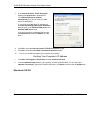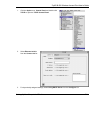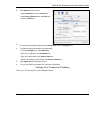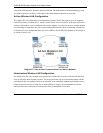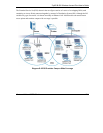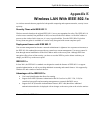
ZyAIR B-500 Wireless Access Point User’s Guide
Wireless LAN and IEEE 802.11 D-1
Appendix D
Wireless LAN and IEEE 802.11
A wireless LAN (WLAN) provides a flexible data communications system that you can use to access
various services (navigating the Internet, email, printer services, etc.) without the use of a cabled
connection. In effect a wireless LAN environment provides you the freedom to stay connected to the
network while roaming around in the coverage area. WLAN is not available on all models.
Benefits of a Wireless LAN
Wireless LAN offers the following benefits:
1. It provides you with access to network services in areas otherwise hard or expensive to wire, such as
historical buildings, buildings with asbestos materials and classrooms.
2. It provides healthcare workers like doctors and nurses access to a complete patient’s profile on a
handheld or notebook computer upon entering a patient’s room.
3. It allows flexible workgroups a lower total cost of ownership for workspaces that are frequently
reconfigured.
4. It allows conference room users access to the network as they move from meeting to meeting, getting
up-to-date access to information and the ability to communicate decisions while “on the go”.
5. It provides campus-wide networking mobility, allowing enterprises the roaming capability to set up
easy-to-use wireless networks that cover the entire campus transparently.
IEEE 802.11
The 1997 completion of the IEEE 802.11 standard for wireless LANs (WLANs) was a first important step
in the evolutionary development of wireless networking technologies. The standard was developed to
maximize interoperability between differing brands of wireless LANs as well as to introduce a variety of
performance improvements and benefits.
The IEEE 802.11 specifies three different transmission methods for the PHY, the layer responsible for
transferring data between nodes. Two of the methods use spread spectrum RF signals, Direct Sequence
Spread Spectrum (DSSS) and Frequency-Hopping Spread Spectrum (FHSS), in the 2.4 to 2.4825 GHz






